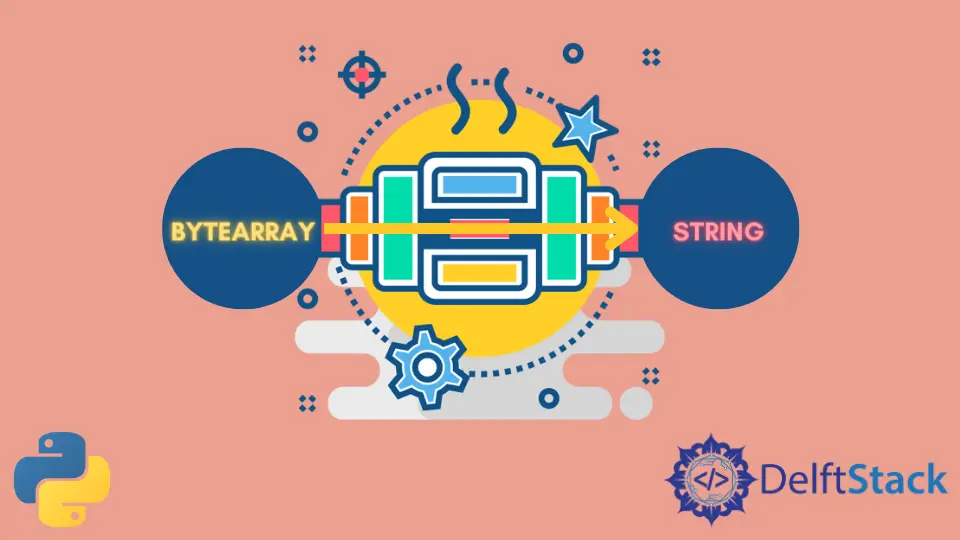在 Python 中将 Bytearray 转换为字符串

你可以使用两种主要方法将 bytearray 转换为 Python 中的字符串: bytes() 和 bytearray.decode()。在本教程中,我们将向你展示如何将这些函数用作这种特殊转换的方法。
使用 Python 中的 bytes() 函数将 bytearray 转换为字符串
如果我们有一个 bytearray 包含带有 utf-8 编码的字符串字符,并且想要将该数组转换为字符串变量,我们可以使用 Python 中的内置 bytes() 函数。
bytes() 函数返回一个不可变的字节对象,然后可以将其存储在字符串变量中。以下代码片段演示了如何使用 bytes() 函数将 bytearray 转换为字符串。
b = bytearray("test", encoding="utf-8")
str1 = bytes(b)
print(str1)
输出:
b'test'
我们使用上面代码中的 bytes() 函数将 bytearray 对象 b 转换为字符串变量 str1。首先,我们在 bytearray 对象内使用 utf-8 编码对文本 test 进行编码。然后我们使用 bytes() 函数将 bytearray 转换为字符串,并将结果存储在字符串变量 str1 中。
最后,我们将数据打印在 str1 变量中。输出显示此过程在原始数据的开头添加了一个 b 对象,然后将数据括在单引号中。这个问题在接下来讨论的方法中得到解决。
使用 Python 中的 bytearray.decode() 函数将 bytearray 转换为字符串
正如我们所见,bytes() 函数将 bytearray 转换为字符串,但会向原始字符串添加额外的数据。这个问题可以通过字符串操作来解决,但过程繁琐。bytearray.decode() 函数 自动为我们做这件事。此方法解码最初在 bytearray 中编码的数据。
以下代码片段演示了如何使用 bytearray.decode() 函数将 bytearray 转换为字符串。
b = bytearray("test", encoding="utf-8")
str1 = b.decode()
print(str1)
输出:
test
我们使用上面代码中的 b.decode() 函数将 bytearray 对象 b 转换为字符串变量 str1。首先,我们在 bytearray 对象内使用 utf-8 编码对文本 test 进行编码。然后我们使用 b.decode() 函数将 bytearray 转换为字符串,并将结果存储在字符串变量 str1 中。最后,我们将数据打印在 str1 变量中。输出显示这个过程不会向我们最初编码的数据添加任何额外的数据。
从上面的演示可以看出,bytearray.decode() 方法在将 bytearray 对象转换为 string 变量方面明显优于 byte() 方法。
Maisam is a highly skilled and motivated Data Scientist. He has over 4 years of experience with Python programming language. He loves solving complex problems and sharing his results on the internet.
LinkedIn